How To Crumb Coat A Cake With Store Bought Icing
In the cake making process, you might be tempted to skip ahead to your final coating of frosting afterward you fill and stack your block layers. If you're a perfectionist though (like I am, to a mistake), it'due south and so worth it to go the extra mile and crumb glaze your cake. Not only will this prevent crumbs from getting into your concluding layer of frosting, it likewise helps to create a stable foundation for your final layer of frosting. In fact, if y'all've ever wondered how to get a super smooth buttercream finish, crumb blanket is i of the essential steps.
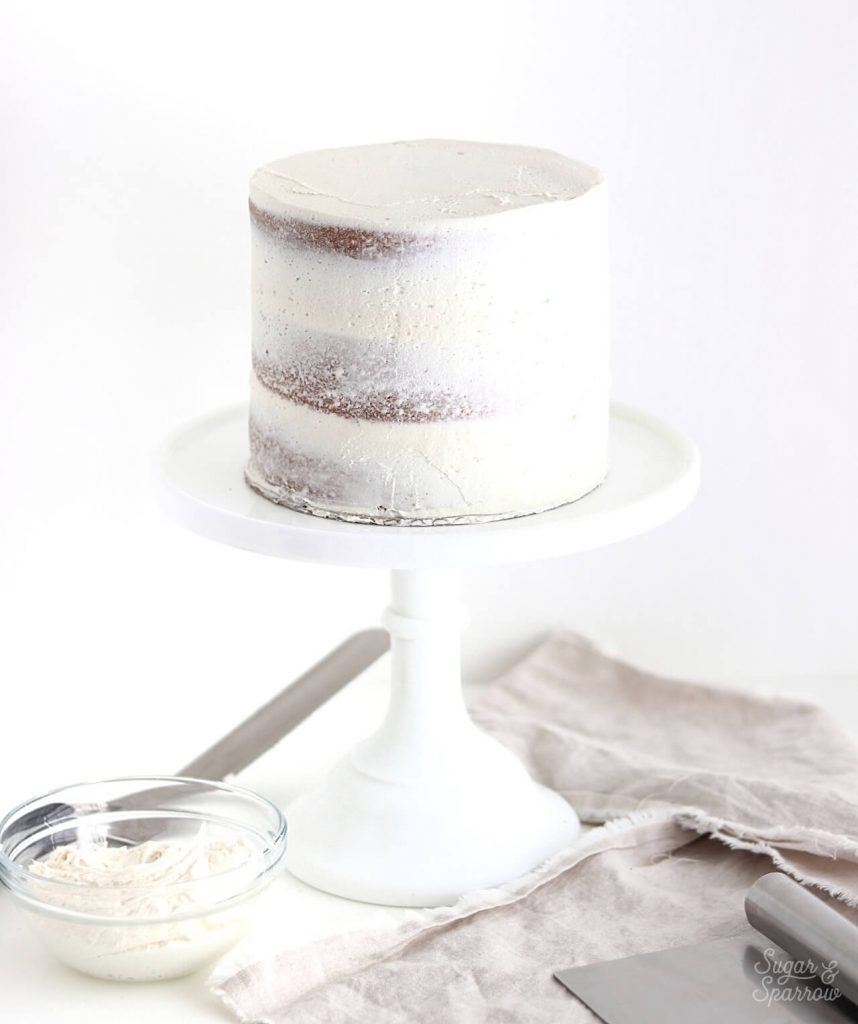
If you've never heard of crumb coating a cake, it simply ways frosting a thin layer of buttercream all over your block after it's been filled and stacked. Here's a quick video I shot of the procedure before I walk you through the steps beneath:
Want to see more than Cake Nuts videos similar this 1? Head to my YouTube Channel to see the growing collection. You'll besides find tons of cake recipes and decorating videos to inspire you and augment your skill prepare – be sure to hit the subscribe button so you lot never miss a new i!
Why Crumb Coat?
There are ii primary reasons why you'd want to crumb coat your block: ane) catching whatever loose crumbs that might want to brand their way into your final layer of buttercream and ii) creating a smooth, fifty-fifty surface and ensuring your cake is level for your terminal layer.
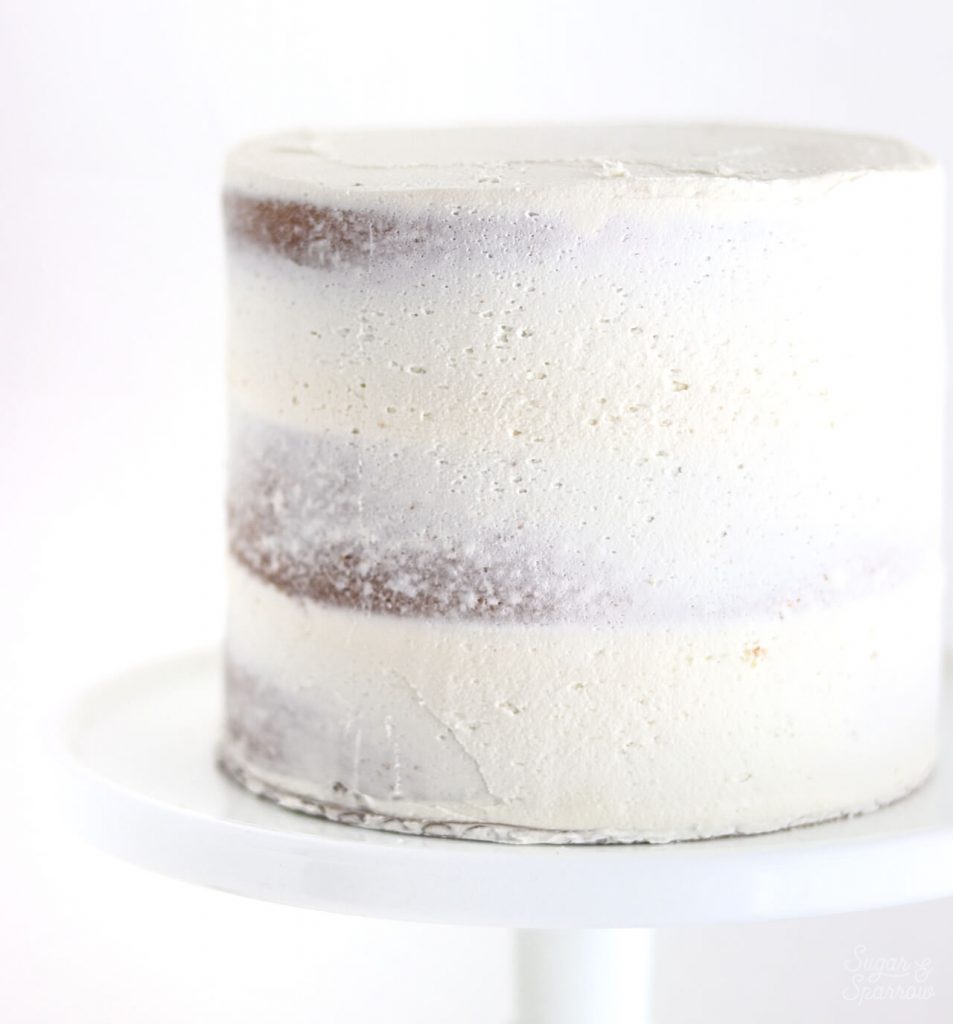
Simply it's non plenty to simply nibble coat your cakes. Chilling your block afterward crumb blanket is what glues all those pesky crumbs down and helps the unabridged structure fix into a business firm, sturdy foundation. It's a step I never miss when making cakes.
What Type of Frosting is All-time for Crumb Coating?
You tin use any type of frosting for nibble coating your cake – basically whatever y'all're planning on using for your last layer of frosting. If you lot need some recommendations, my Basic Vanilla Buttercream is the perfect consistency for both nibble blanket your block and adding your final layer of frosting, and then feel free to apply that if you're in need of a go-to vanilla buttercream recipe.
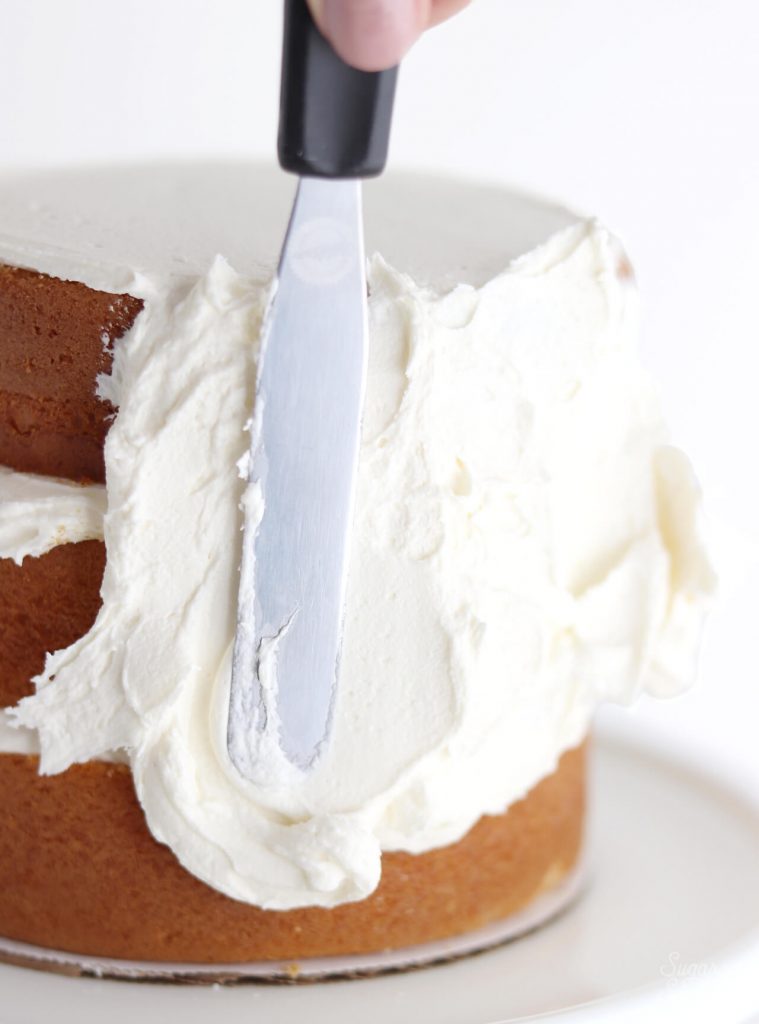
If you're looking for more buttercream flavors to endeavour, be sure to browse my Buttercream Recipe Collection – any of those will work great!
How to Crumb Coat Your Cake
To crumb coat your cake without getting whatever crumbs in your batch of frosting, you'll desire to start by calculation almost 1 cup of that frosting into a small bowl. This is what you'll use to crumb glaze instead of dipping your spatula in and out of the larger bowl of frosting. Place your filled and stacked cake on a turntable. This is the turntable I'm using – it has a built in anti-skid section under my cake board that makes it extra like shooting fish in a barrel to frost a cake on!

Start by frosting a thin layer of frosting on the tiptop of your cake and smoothing it downwardly with an angled spatula.
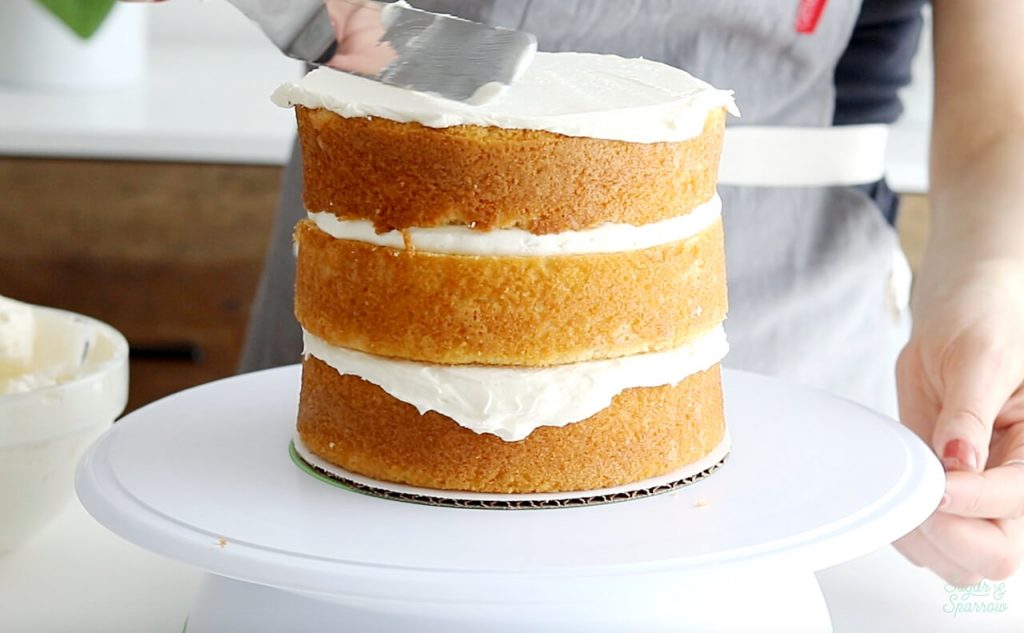
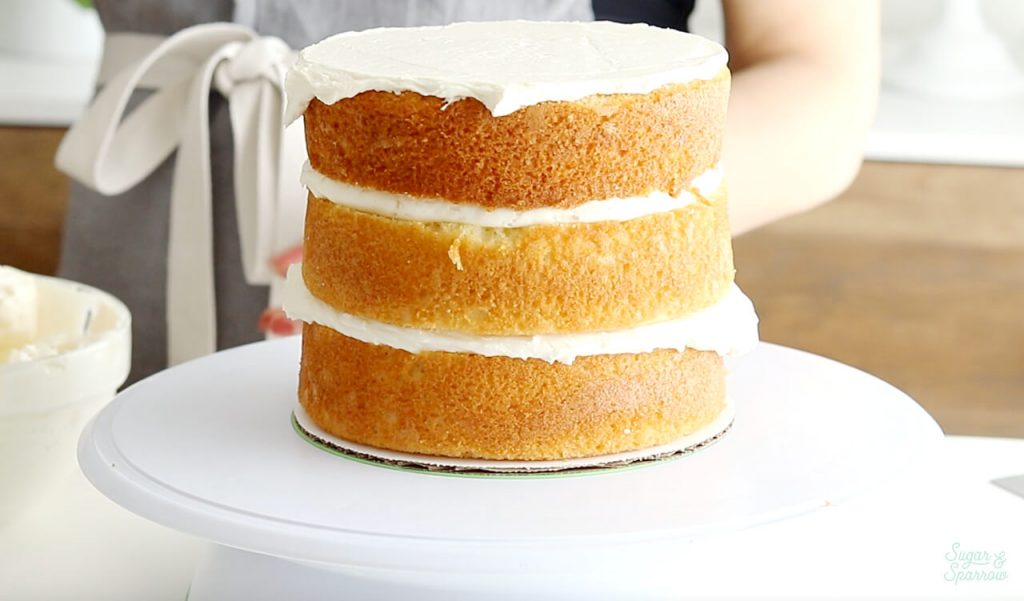
Next, add a sparse layer of frosting all around the sides of the cake and use an icing smoother to get the sides polish and level. Basically hold the icing smoother at a 45 caste angle towards yous while yous rotate the turntable and scrape off the excess onto the edge of your basin. Be sure to fill up in any patchy areas with more buttercream and echo the process of smoothing and scraping until you've got a thin, however level crumb glaze.
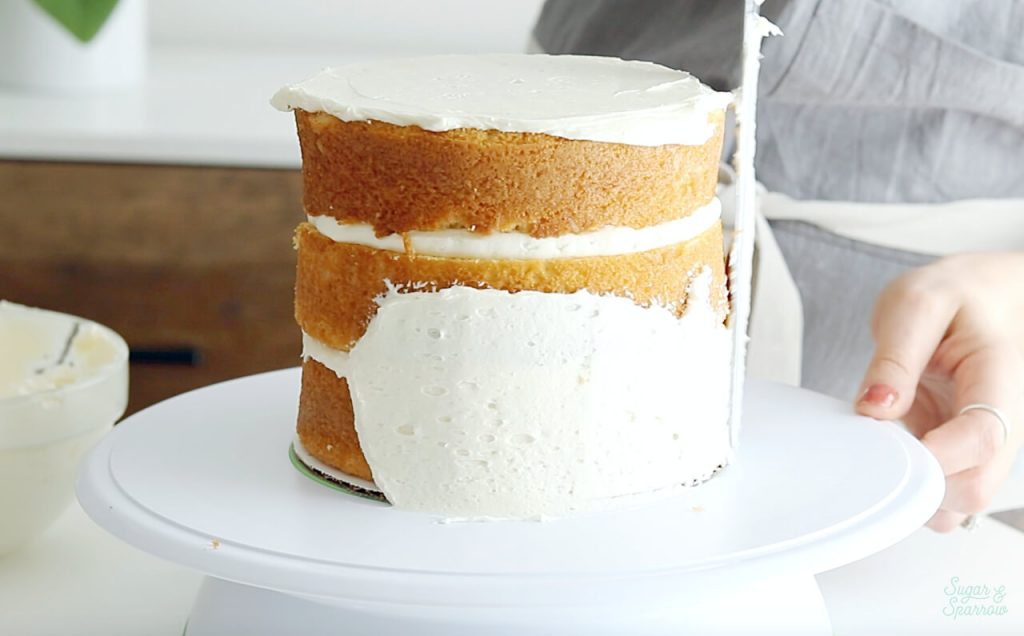
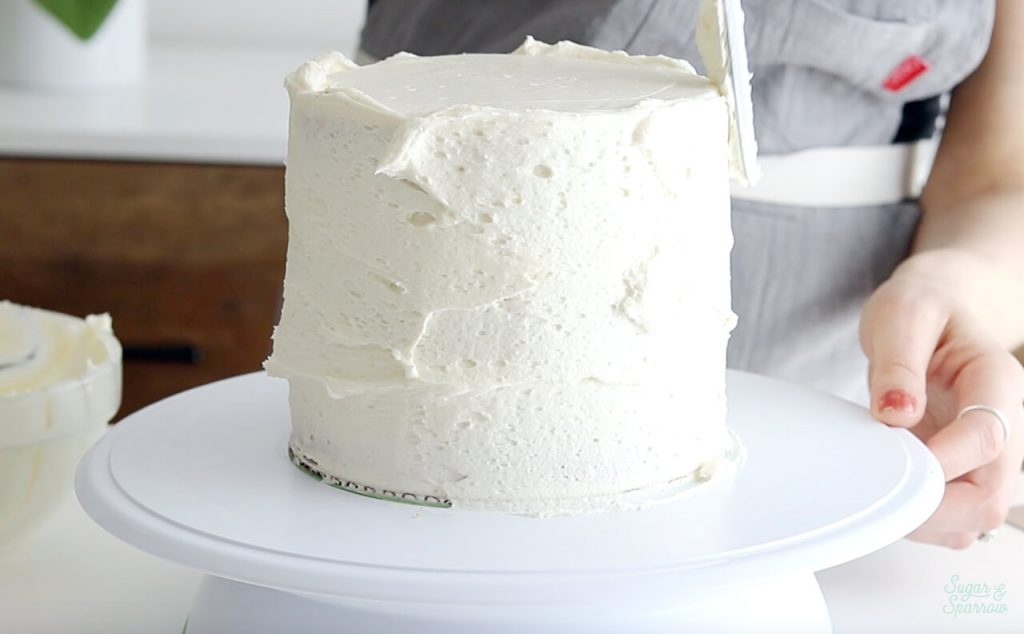

Y'all'll find that a frosting "crown" has formed around the meridian edges of your block, which is what you desire to run across. Using a clean angled spatula, swipe those edges toward the center of the cake to create precipitous edges all effectually the top.

When your cake is looking level and covered in a prissy, sparse crumb coat, pop the whole thing (turntable and all) into the refrigerator to arctic for at least thirty minutes.

Like I mentioned previously, chilling your block will make the buttercream firm, essentially glueing down whatever crumbs within the crumb glaze and creating a stable foundation for your next layer of frosting.
Adjacent Steps
After refrigerating for at least 30 minutes, yous're ready to motility on to your last layer of frosting. If you're short on time though, it'south perfectly fine to refrigerate a nibble coated block overnight. Fifty-fifty though the crumb coat layer of buttercream is thin, it helps preserve the cake layers beneath and keep everything moist and fresh.
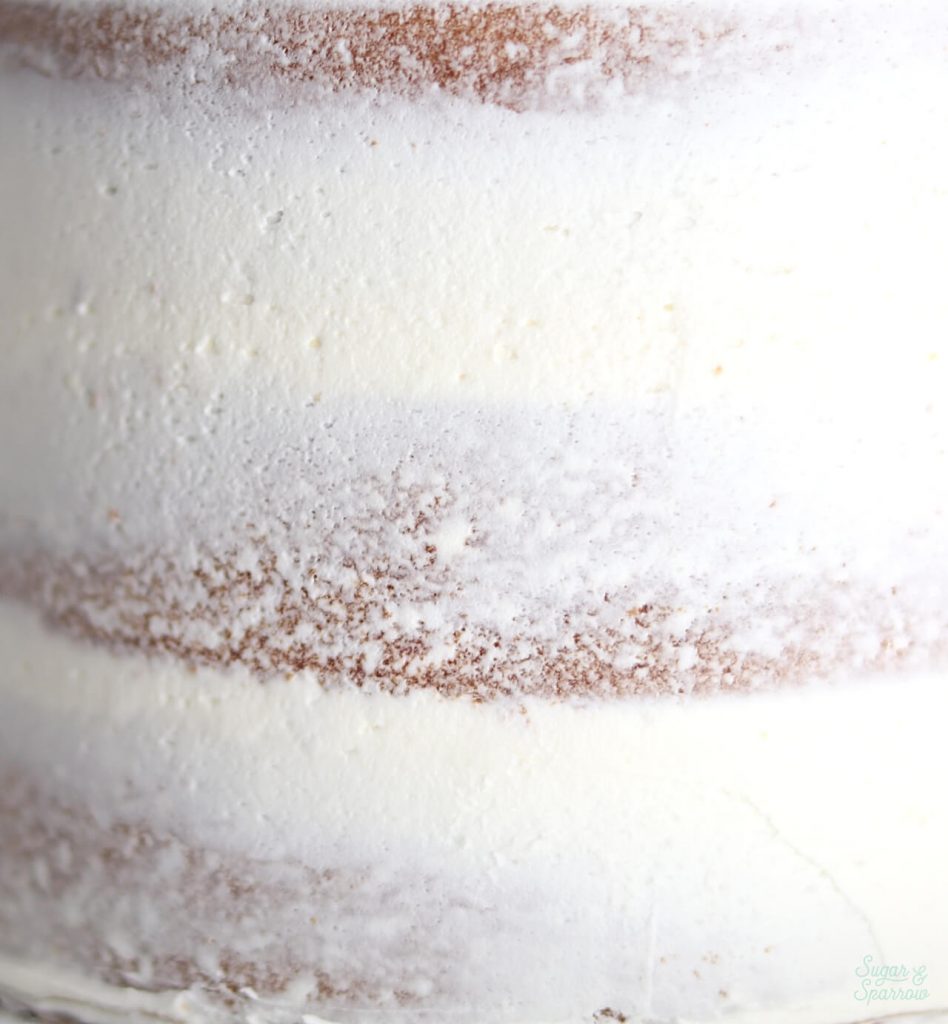
Practice continue in listen that the longer the corporeality of time between baking your cake layers, decorating them, and serving them, the less fresh your block will be. A typical timeline for me looks like:
- Twenty-four hour period 1: Bake block layers + brand buttercream
- Day ii: Make full, nibble glaze, frost and decorate the cake
- Day 3: Photograph and serve the cake
It'due south perfectly fine to divide upwards "Day 2" into two split up days though: filling and crumb coating one mean solar day, frosting and decorating the next. This will divide the timeline into iv days between baking and serving, simply the cake will remain fresh. I do have an upcoming Block Basics mail detailing all my best tips for making cakes ahead and planning things out so you avert the pressure level of baking, decorating, and serving on the same 24-hour interval, so stay tuned!
Want more Cake Basics? Head here to see all of the posts and learn the methods of caking I've come to honey over the years. I'm auspicious you on every step of the way!
How To Crumb Coat A Cake With Store Bought Icing,
Source: https://sugarandsparrow.com/crumb-coat/
Posted by: gassponerver.blogspot.com


0 Response to "How To Crumb Coat A Cake With Store Bought Icing"
Post a Comment